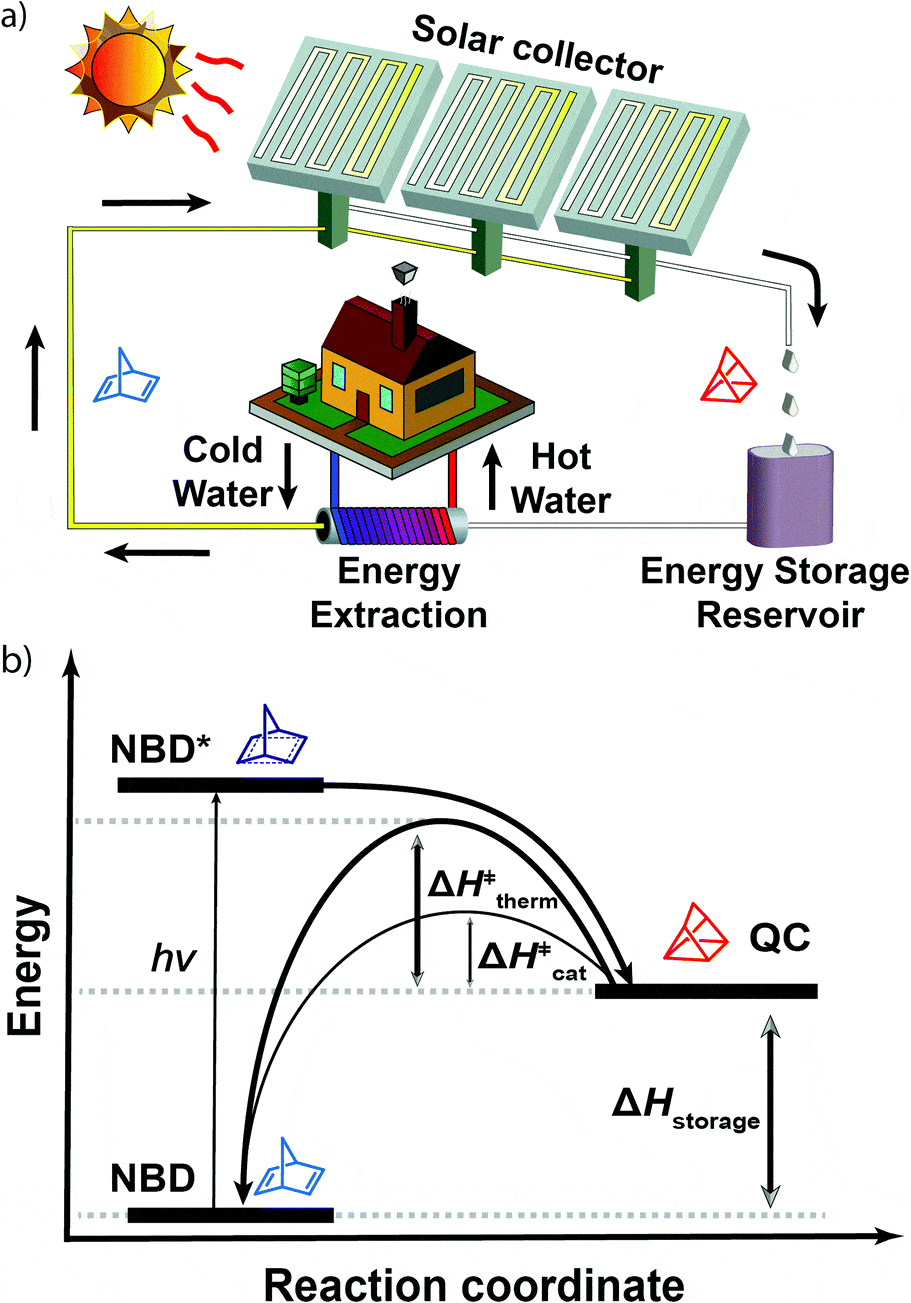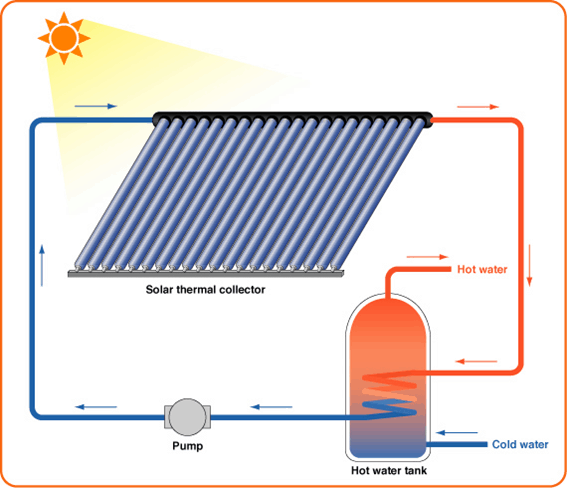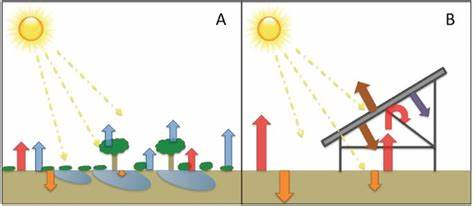Solar energy is one of the best alternative energy source harnessed and developed for several uses across the world. It is generated from the sun, which produces up to 400, 000,000,000,000,000,000,000,000 watts every second in the form of thermal or electric energy. Many individuals get surprised when they hear about this number and do you know what? The sun will maintain this amount of energy for the next 5 billion years. Therefore, the need for solar energy is expected to significantly increase in the future. To assist you understand different aspects about solar energy, consider reading this article to the end.
What is solar thermal energy?
Solar thermal energy is basically the technology for harnessing the heat from the sun by using thermal solar panels. Thanks to this type of energy because it makes it easy to heat water and other types of liquid to about 50 degrees. The energy generated can be utilized to supply all kinds of thermal services that require to be covered. Hence, the energy can fit in industry and building because it is considered an economical and efficient method. After all, when using solar energy, you don’t incur an extra cost because it is free and can be obtained anywhere provided the sun is available.
Also, using solar thermal energy implies lowering carbon dioxide emissions and saving overall energy consumption. That said, using this method is a primary point for efficient energy in buildings and industries. Its implementation was a significant new solution for saving energy. Actually, it is completely enacted in our society and it is integrated and reliable in all kinds of buildings. Besides, their maintenance cost is low, hence, they are profitable. Utilizing a remote control system, they assure safety and comfort. So what is required?

To capture energy from the sun to heat the water, you require a storage tank, solar station with pump, mounting hardware, collectors, expansion tank, controller, piping and solar fluid. The solar station encompasses the valves and pumps required to work the whole system and the storage tank may be combined with the heating systems.
How does solar thermal energy work?
The thermal solar energy system works by capturing the energy from the sun and converting it into heat. Afterward, the heat is transferred to businesses or home heating system in the form of space heating or hot water. Solar thermal panel works together with collectors, boiler, or immersion heater. The collector utilizes the rays from the sun to heat water or any liquid mixed with glycol to avoid freezing during winter. The heated liquid from the collector is transferred to the heat exchanger. The heat derived from the exchanger then heats the water or liquid in the cylinder. When liquid or water releases heat, the liquid flows back to the initial point (collectors) for reheating. Control is always there to allow the liquid to move to the collectors when the heat is sufficient. Overall, thermal solar energy is reliable, proven, and of low maintenance.
Component of solar thermal energy

Collectors
Collectors harness energy from the sun by heating liquid or water contained in the glass pipes. There are two different types of collectors; evacuated tubes and flat plate. Any of them has its own pros and cons so you need to be careful when selecting the right one for your property.
Pump and controller
The system controller is basically used to control the pump and offer details on the performance of the system and any faults should any develop. On the other hand, the pump allows the liquid to circulate between the water cylinder and the collectors efficiently.
Water cylinder
The heat harnessed by the collectors is transferred to the water cylinder’s coil. A thermal solar water cylinder contains a coil that enables efficient heat transfer from the collectors.
Pros and cons of solar thermal energy
Despite offering efficient heat for both home and industrial use, solar thermal energy has several benefits, particularly environmental ones and some setbacks as well. Let’s have a look at them in detail.
Pros

It is a renewable source of energy
Unlike other types of energy generated from fossil fuel, solar thermal energy is renewable. This makes it somehow reliable, freeing the users from worry when replenishing it. Utilizing this type of energy ensures that countries are a bit energy-independent by minimizing imported energy.
Non-pollutant
Apart from pollution made when manufacturing thermal solar energy devices, thermal solar energy doesn’t pollute the environment with greenhouse gases or toxic chemicals. Due to rising concern over the negative result of climate change, thermal solar energy offers a safe alternative source of energy. Unlike natural gas, thermal solar heat does not emit any carbon.
Low maintenance
After installing the whole system, thermal solar energy is usually low maintenance. Unlike other energy-producing systems from natural gas or coal, solar thermal energy devices can be left alone for a long time after installation. It requires a little workforce to operate a solar thermal array than complicated electric devices. Several solar thermal devices, particularly the ones that heat hot water utilize easy technology than photovoltaic panels.
Minimize heating bills
The same way solar power minimizes electric bills, thermal solar energy can minimize your heating bills as well. This is particularly true when the second source of energy can be used to heat your water. If you use electricity at home to heat water, thermal solar can assist you to save a lot on your electric bills.
Can be used with solar PV
As solar PV generates electricity, solar thermal heats water. If you install both systems, both technologies can help minimize your electric bills by a large amount.
Require little space
Thermal solar water heating systems need a little space to install. You can actually find some installed on the rooftops. This helps avoid the need for thermal solar collector installation in other areas like a garden.
Established technology
The technology used dates back to 1896 and it is well established. While the first collectors used were somehow primitive, thermal solar energy technology has been used for decades.
Can offer ROI
Thermal solar energy can offer ROI over their lifetime because you’ll need to save some bucks on your water heating bills. That said, the savings are probably going to increase then the cost of the system.
Can generate power
Thermal solar power also plays a significant role in the power industry. There are available thermal solar power plants that enable utility firms to utilize the technology for generating electricity.
Thermal solar power plants that utilize thermal technology will focus on the rays of the sun to heat water. The heat from the water will afterward be exchanged to water to the boiling point. Steam is produced that moves turbines to generate power
Cons

Just like the advantage, several setbacks of thermal solar overlap with the ones of solar energy. The system does have some unique cons.
Expensive installation
Installing a thermal solar system is expensive just like solar panels. Although the overall technology is relatively cheap compared to solar PV, there are extra expenses incurred during installation. Such expenses include;
- Storage tank installation
- Plumbing work
- Integrating heat exchange systems
Traditional systems for heating water are extremely cheap to install, however, they need a convenient source of energy to run. Unfortunately, the determining aspect is the initial cost of the system that puts the technology away from us.
Doesn’t work during the night
Basically, thermal solar systems can’t be used at night not unless you store hot water for later use.
Hot water can’t be stored for long
While it is possible to store hot water, it must be maintained at the right temperature. Hot water systems utilize cycles that ensure water is at an ideal temperature. The issue with a thermal solar system is that they can’t maintain the temperature during the night.
Due to this setback, if you don’t have a backup plan, chances are that hot water will run out after few hours. On the other hand, solar PV can store power in the battery unit to be used during the night.
Less efficient in winter
Undoubtedly, there is minimal solar energy during the winter season compared to summer. Although this setback applies to both solar hot water and solar power, it is more critical with the latter.
Few installers
Since solar PV technology is popularly used compared to thermal solar technology, there are few installers experienced in the installation of thermal solar systems. While this isn’t a major issue, more people are considering using the thermal solar system.
Solar thermal energy vs. photovoltaic
The differences between these two solar energy-based methods lie between technology, use, and benefits.

Technology
The primary difference between the two can be seen in the way they perform. Solar PV basically depends on the photovoltaic effects. What happens is that photon collides with a surface made of unique materials generating electrons. On the other hand, solar thermal utilizes the sun to heat water or liquid.
We have a dedicated category about Solary Energy
Basically, the photovoltaic effect solely occurs in semiconductors that after particular chemical procedures enable the generation of electric current. These semiconductors are thin shaped materials that conform to the primary element used in the solar cells. Usually, the working mechanism of thermal solar energy is not sophisticated however; it is beneficial for generating consumable energy like a photovoltaic system.
Use
As far as the use of these technologies is concerned, the initial step is separating small home solar systems for both thermal and PV from the power plants. Thermal and PV systems share electric production as their objective. With thermal system heat water or liquid that turns the gas turbine, gas engine or both, the PV system generates electricity from the sun directly. The electricity produced is used in the grid as AC with appropriate voltage value.
Photovoltaic power systems have the largest capacity above 500 MW. On the other hand, thermal solar systems have a slightly lower capacity of up to 400 MW. Essentially, both types are increasingly becoming popular across the world, with several under construction and others planned.
FREQUENTLY ASKED QUESTIONS

Does solar thermal energy work in winter?
Yes, the thermal solar energy system works in winter. However, the energy produced is less efficient compared to the one produced over the summer. With that in mind, you can depend on the immersion heater, boiler, or any other water heating system.
Why is thermal solar less effective in winter?
Basically, thermal solar systems solely depend on the sun to heat water. During this season, there is inadequate sun available to capture the solar energy. Besides, a lot of snow during winter can minimize the overall output. Normally, the flat plate collectors can work better in snowy conditions because the sunlight can penetrate the snow heating the absorber plates. This makes the snow slide a bit faster. Consequently, this doesn’t happen when it comes to evacuated tube collectors. Why? Because they contain a form of vacuum insulation tailored to minimize heat loss. Therefore, they will not produce the required heat to melt the snow.
If you are from Australia check also STSc
Can thermal solar panel freeze?
The panels cannot freeze over the winter since the closed-loop systems work by pumping water or liquid with antifreeze through the collectors. Afterward, liquid flow through the water cylinder’s coil to heat water for home or industrial use.
How is thermal solar energy used?
The most common uses are pool heating, water heating, and space heating. Although these uses are different, they all use the same principle.
How much water can the solar water heater supply?
It depends on where you live and how much sunlight is available. On average, the solar heater will supply approximately 70-80% of the house hot water.
Conclusion
The need for thermal solar energy and other forms of energy is significantly increasing. More research is being done to explore the bigger potential of technology used in energy production. Essentially, modern technology is being used to improve its efficiency and minimize its footprint. The reason for its improvement is to ensure solar thermal energy is as non-intrusive as possible while still benefiting from it. With modern technology, solar energy collectors are relatively smaller and a bit concentrated while producing a significant amount of energy output.
References
Special thanks for the featured photo to Riccardo Annandale